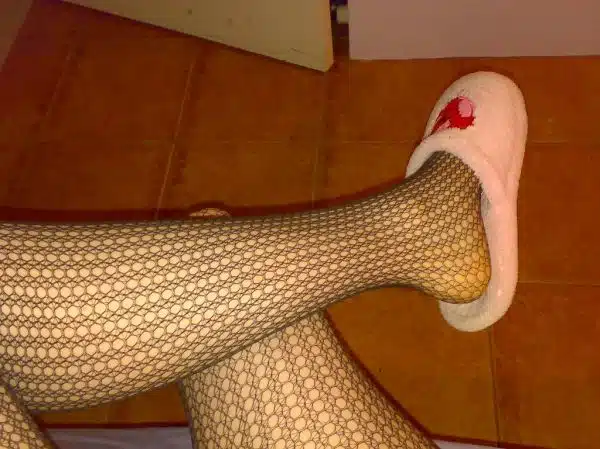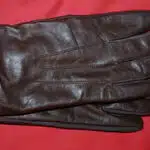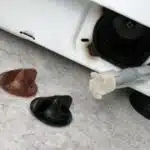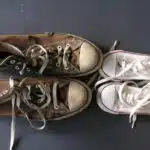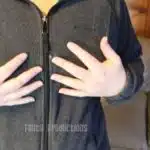As a slipper care expert, I am often asked about the best way to wash and care for slippers. Slippers are a popular type of footwear that provide warmth, comfort, and convenience. They are especially popular during the colder months of the year when people want to keep their feet warm and cozy in their homes. However, with regular use, slippers can become dirty, smelly, and even damaged over time. Therefore, it is important to know how to properly wash and care for your slippers to ensure they last longer and remain comfortable and hygienic.
In this article, I will share some tips on how to wash and care for different types of slippers, including woolen, cotton, leather, and synthetic materials. I will also discuss some common mistakes people make when washing their slippers and how to avoid them. By following these recommendations, you can extend the lifespan of your favorite pair of slippers and maintain their quality and comfort for years to come.
Understanding Your Slipper Materials
To properly care for your slippers, it’s important to first understand the different types of materials they may be made from. The most common materials used for slippers include wool, fleece, cotton, and synthetic fabrics. Each material has its own unique properties that require specific cleaning methods.
When it comes to sizing, slipper manufacturers often size their products differently than regular shoes. This is because slippers are meant to fit more loosely and comfortably than traditional footwear. It’s important to carefully review the manufacturer’s sizing chart before purchasing slippers to ensure a proper fit.
Wool is a popular choice for slipper materials due to its breathability and natural insulation properties. However, wool can be prone to shrinking if not washed correctly. Fleece is another popular option that offers warmth and softness without the risk of shrinking. Cotton slippers are lightweight and airy but may not provide as much warmth as other materials. Synthetic fabrics like polyester are often used in slipper linings for added durability and moisture-wicking capabilities.
Spot Cleaning For Quick Fixes
When it comes to caring for your beloved slippers, prevention is always better than cure. But sometimes, no matter how careful you are, accidents happen. Perhaps you spilled some coffee on your favorite pair of slippers or stepped in a bit of mud while taking out the trash. Don’t fret! There are DIY remedies and home hacks that can help you remove those pesky stains.
Firstly, before attempting any cleaning method, make sure to identify the type of material your slippers are made of. Different materials require different cleaning methods, so it’s crucial to read the care label or manufacturer’s instructions. For example, suede slippers should never be cleaned with water as it can damage the delicate texture. Instead, use a soft-bristled brush to gently remove any dirt or stains.
For fabric and leather slippers, there are several quick fixes that you can try at home. For instance, mix equal parts white vinegar and water and apply the solution to the stained area using a clean cloth. Let it sit for 10-15 minutes before wiping it off with a damp cloth. Another home hack is using baking soda and water to form a paste that can be applied directly onto the stain. Let it dry completely before brushing it off with a soft-bristled brush.
Now that you’ve tackled those pesky stains on your slippers, it’s time to prepare them for washing. In the next section, we’ll discuss how to properly wash different types of slippers without damaging them in the process. It’s important not to skip this step as improper washing techniques may ruin your precious footwear!
Preparing Your Slippers For Washing
- Prior to cleaning slippers, it is recommended to gather all necessary supplies, such as a mild detergent, a soft sponge, and a soft cloth for drying.
- Selecting an appropriate cleaning method is key to properly caring for slippers. Generally, hand washing is the best method for delicate materials.
- Begin by filling a basin with lukewarm water and a small amount of detergent.
- Submerge the slippers in the basin, allowing them to soak for several minutes.
- Gently scrub the slippers with a soft sponge and, if necessary, a small brush.
- Rinse the slippers thoroughly and allow them to air dry on a soft cloth.
Gather Supplies
To ensure that your slippers remain in good condition and last for a long time, it is important to properly wash and care for them. The first step in preparing your slippers for washing is to gather all the necessary supplies. Finding suitable and durable supplies is essential as it ensures that the cleaning process will be effective without causing any damage to the slippers.
When gathering supplies, make sure to have a gentle detergent or soap that is suitable for delicate fabrics. Avoid using harsh chemicals or bleach as they can cause discoloration or damage to the material of the slippers. Additionally, you may need a soft-bristled brush or sponge to remove any dirt or stains from the surface of the slippers. Proper storage of these supplies is also important to prevent damage or loss.
Storing your cleaning supplies in a designated area ensures that they are easily accessible when needed and prevents them from getting misplaced or damaged. A small basket or container placed near your washing machine can be a convenient and practical solution for storing these items. By taking these steps, you can effectively prepare your slippers for washing and ensure their longevity without compromising their quality.
Select A Cleaning Method
Once you have gathered all the necessary supplies for washing your slippers, the next step is to select a cleaning method that suits your needs. There are several eco-friendly options available that can help reduce the environmental impact of your cleaning process. For instance, you can opt for natural detergents or soap that are free from harmful chemicals and come in biodegradable packaging. Additionally, you can use cold water instead of hot water to save energy and reduce greenhouse gas emissions.
If you are unsure about how to clean your slippers effectively, it may be worthwhile to consider professional cleaning services. These services often provide specialized care for delicate fabrics like wool or silk, which can be difficult to clean at home without causing damage. Moreover, they use high-quality equipment and techniques that ensure deep cleaning while minimizing the risk of shrinking or discoloration.
However, professional cleaning services may not be feasible for everyone due to budget constraints or lack of access. In such cases, it is important to follow best practices when washing your slippers at home. Always read the care instructions on the label and avoid using harsh chemicals or bleach as they can damage the material. By choosing an appropriate cleaning method and being mindful of environmental impact and budget constraints, you can effectively prepare your slippers for washing and extend their lifespan.
Clean Slippers
As a slipper care expert, one of the most important steps in maintaining the quality and longevity of your slippers is to keep them clean. While professional cleaning services are available, DIY cleaning solutions can be just as effective and eco-friendly. One option is to use natural detergents or soap that are free from harmful chemicals and come in biodegradable packaging. Another option is to use cold water instead of hot water, which not only saves energy but also reduces greenhouse gas emissions.
When cleaning your slippers at home, it’s important to follow best practices to avoid damaging the material. Always read the care instructions on the label and avoid using harsh chemicals or bleach. For wool or silk fabrics, it may be beneficial to invest in specialized care products such as a wool detergent or fabric softener made specifically for delicate materials. Additionally, consider spot cleaning before washing the entire slipper, especially if there are only small areas that need attention.
Lastly, remember that maintaining clean slippers not only prolongs their lifespan but also promotes good hygiene habits. By being mindful of eco-friendly options and proper cleaning techniques, you can effectively prepare your slippers for washing and ensure they remain in good condition for years to come. With these tips in mind, you can confidently take care of your slippers and serve others by setting an example for sustainable living practices.
Choosing The Right Detergent
When it comes to washing your slippers, choosing the right detergent is crucial. It can ensure that your slippers are clean and fresh while also preserving their quality. When selecting a detergent for your slippers, opt for eco-friendly and fragrance-free options. This will not only benefit the environment but also protect your skin from any potential irritants.
It’s important to differentiate between detergents and fabric softeners when caring for your slippers. While detergents are designed to remove dirt and stains, fabric softeners are used to give clothes a softer texture and reduce static cling. The use of fabric softeners on slippers can actually be harmful as it can damage the fibers and reduce their effectiveness in keeping your feet warm.
In summary, keep in mind these tips when choosing a detergent for your slippers: go for eco-friendly and fragrance-free options, avoid fabric softeners, and always follow the care label instructions on your slipper’s material composition. By doing so, you’ll ensure that your slippers remain clean, fresh smelling, and long lasting. In the subsequent section, we will discuss how to machine wash cotton slippers using these tips effectively.
Machine Washing Cotton Slippers
Choosing the right detergent for your slippers is an essential part of their care routine. However, it’s equally important to know how to wash them properly. Cotton slippers are a popular choice because they’re soft and comfortable, and they can be easily cleaned in the washing machine.
If you’re using fabric softener on your cotton slippers, make sure to follow the instructions carefully. Using too much fabric softener can leave a residue on your slippers, making them less absorbent and reducing their lifespan. To avoid this issue, use a small amount of fabric softener or skip this step altogether.
When drying cotton slippers after washing, avoid using high heat as it can cause shrinkage. Instead, air-dry them by placing them in a well-ventilated area away from direct sunlight. If you need to speed up the drying process, place a dry towel inside each slipper to absorb excess moisture.
Hand washing woolen slippers requires special attention and care. Unlike cotton slippers that can be washed in the machine with little effort, woolen ones require more delicate handling to avoid damage. Here’s how to safely hand wash your woolen slippers without causing any harm: [next section topic].
Hand Washing Woolen Slippers
Woolen slippers are a popular choice for their warmth and comfort. However, improper washing and drying can lead to shrinking and damage. To properly wash woolen slippers, hand washing is recommended.
To begin, fill a sink or basin with lukewarm water and add a mild detergent specifically designed for wool fabrics. Gently agitate the water to create suds. Place the slippers in the water and press down gently to fully submerge them. Avoid scrubbing or rubbing the material as this can cause damage.
Once washed, it’s important to properly dry woolen slippers to prevent shrinking. Do not wring out excess water as this can misshape the slippers. Instead, gently squeeze out any excess water and lay them flat on a clean towel to air dry in a well-ventilated area away from direct sunlight or heat sources.
Tips for preventing shrinking of woolen slippers include avoiding hot water temperatures during washing and never placing them in the dryer or using an iron on them. By following these steps, you can keep your woolen slippers clean and cozy for many wears to come.
Transition: While hand washing is recommended for woolen slippers, cleaning leather slippers requires a different approach.
Cleaning Leather Slippers
Real-life Example: Imagine you have a pair of leather slippers that you love wearing around the house. You’ve had them for a while, and they’re starting to look a little dull and worn out. What do you do? The answer is simple: polish and condition them regularly.
Polishing leather slippers helps to restore their natural shine and protect them from damage. To begin, use a soft cloth or brush to remove any dirt or debris from the surface of the slippers. Then, apply a small amount of leather polish to another soft cloth and rub it into the leather in circular motions. Allow the polish to dry completely before buffing it off with another clean cloth.
Conditioning leather is also an important step in caring for your slippers. Conditioning helps to keep the leather soft, supple, and nourished, which can extend its lifespan. Apply a small amount of conditioner onto another clean cloth and rub it into the leather using circular motions. Allow the conditioner to absorb into the leather for several hours before wiping away any excess with another clean cloth.
Transition: Now that you know how to care for your leather slippers properly, let’s move on to how to wash synthetic slippers without causing damage or discoloration.
Washing Synthetic Slippers
When it comes to washing synthetic slippers, you must first check the care label to determine the best way to clean them. Most synthetic slippers can be washed by hand or in a washing machine. However, it is important to use a gentle cycle and cold water to prevent damage.
To remove stains from your synthetic slippers, you can use a mild detergent and warm water. Apply the detergent directly onto the stain and rub gently with a soft cloth or brush. Do not use harsh chemicals or bleach as they may cause discoloration or damage the material.
Preventing wear and tear on your synthetic slippers is essential for their longevity. To avoid excessive wear and tear, do not wear your slippers outside or on rough surfaces. Additionally, it is important to store them properly when not in use so that they do not get crushed or deformed.
Moving forward into drying your slippers, it is vital to air dry them completely before using them again. This will prevent any potential mold growth due to moisture build-up inside the slipper. Air drying also helps maintain the shape of your slippers and prevents any shrinkage that may occur if they are exposed to high heat. Overall, taking care of your synthetic slippers through proper washing techniques and preventative measures will help extend their lifespan and keep them looking like new for longer periods of time.
Drying Your Slippers
After washing your synthetic slippers, it is important to let them dry properly. Air drying is the best method as it helps maintain the shape and structure of the slippers. Avoid using direct heat sources such as a hair dryer or placing them in the sun as this can cause damage to the material.
To ensure your slippers dry evenly, stuff them with a towel or newspaper to absorb excess moisture, especially if they are lined with fur or wool. This will also help maintain their shape and prevent any potential shrinking. Additionally, you can use a dryer sheet to help eliminate any stubborn odors that may linger after washing.
Remember that proper drying is just as important as proper washing when it comes to slipper care. By air drying your synthetic slippers and taking extra measures such as stuffing them with towels and using dryer sheets, you can extend their lifespan and keep them looking and smelling fresh for longer. In the next section, we will discuss some common mistakes people make when caring for their slippers and how to avoid them.
Avoiding Common Mistakes
Common mistakes can easily happen when washing and caring for slippers. One of the most common mistakes is failing to read the care label or instructions that come with the slippers. Every pair of slippers is made from different materials, and each material requires specific cleaning methods. It is important to follow these instructions to prevent damage and ensure that your slippers last longer.
Another common mistake is using harsh detergents or bleach when washing your slippers. These cleaning agents can cause discoloration, fading, and even break down the materials in your slippers. Instead, opt for mild detergents or gentle soap solutions that are specifically designed for delicate fabrics like those used in slippers.
Proper techniques should also be followed when drying your slippers after washing. Many people make the mistake of putting their wet slippers directly in the dryer or leaving them out in direct sunlight. This can cause shrinkage, warping, and damage to any embellishments on your slippers. Instead, air dry your slippers by laying them flat on a clean towel or hanging them up to dry away from direct heat sources.
Transition: Now that you know how to avoid common mistakes when caring for your slippers, it’s time to move on to dealing with odors and stains.
Dealing With Odors And Stains
Now that we have covered the common mistakes to avoid when washing and caring for your slippers, it’s time to move on to dealing with tough stains and preventing future odors. While slippers are generally easy to maintain, they can become stained over time due to wear and tear. Here are some tips for removing those stubborn stains.
Firstly, always check the care label on your slippers before attempting to remove a stain. Some materials may require a specific cleaning solution or method. For general stains, mix equal parts water and white vinegar and apply it directly onto the stain with a clean cloth. Let it sit for 10-15 minutes before blotting with a damp cloth. Repeat as necessary until the stain is removed.
Preventing future odors is equally important in slipper care. One way to do this is by regularly sprinkling some baking soda inside your slippers and leaving it overnight. This will help absorb any moisture or odor-causing bacteria. You can also use shoe deodorizers or essential oils for added freshness.
By following these tips, you can ensure that your slippers remain clean and fresh-smelling for longer periods of time. In the next section, we will discuss how to store your slippers properly to maximize their lifespan and prevent any further damage or wear.
Storing Your Slippers Properly
Symbolically, proper storage of your slippers is like putting them to bed after a long day. Just as you tuck in your loved ones for a good night’s rest, it is important to give your slippers the same level of care and attention. Properly storing your slippers ensures that they stay clean and last longer, preventing wear and tear.
To start with, make sure that your slippers are completely dry before storing them. Dampness can cause bacteria growth and unpleasant odors. Once dry, store them in a cool, dry place away from direct sunlight. Avoid leaving them on the floor or under other items that may crush or damage their shape.
Additionally, consider using shoe trees or stuffing them with newspaper to help maintain their shape while in storage. This will also help prevent any creases or wrinkles from forming in the material. Remember, proper storage is essential for prolonging the life of your slippers and maintaining their overall quality.
Proper storage is just one aspect of caring for your slippers. In the next section, we will discuss tips for long-term care and maintenance to ensure that your beloved slippers remain comfortable and cozy for years to come.
Tips For Long-Term Care
Choosing the right slipper materials is crucial for long-term care. When selecting slippers, consider the material used for its construction. Slippers made from natural fabrics, such as wool or cotton, are more breathable and comfortable, while those made from synthetic materials like polyester may not be as cozy but are more durable. Additionally, look for slippers with non-slip soles to prevent slips and falls.
One of the most important factors in long-term slipper care is regular cleaning. Clean your slippers regularly to prevent dirt buildup and odors. For fabric slippers, vacuuming or brushing them can remove dirt and debris. If they need a deeper clean, hand wash them with mild detergent or use a washing machine on a gentle cycle. Always check the label instructions before washing to avoid damaging the fabric.
To ensure that your slippers last longer, proper care is essential. By choosing high-quality materials and regularly cleaning them, you can extend their lifespan significantly. However, if damages occur, it’s important to know how to repair them properly to prevent further harm. In case of wear and tear or holes in your slippers’ fabric or sole, repairing damaged slippers should be done promptly to avoid the problem worsening over time.
Repairing Damaged Slippers
As slipper care experts, we understand the value of investing in quality slippers that can last for years. However, even the most durable slippers may eventually show signs of wear and tear. It is important to know how to repair slippers to prolong their lifespan and prevent further damage.
How to Repair Slippers: Before attempting any repairs, it is crucial to assess the extent of the damage. Small tears or holes can be fixed with a needle and thread, while larger damages may require more extensive repairs such as gluing or patching. If your slippers have a sole that has become detached from the upper part of the slipper, you may need to use special glue made specifically for shoe repairs.
Preventing Slipper Damage: The best way to avoid having to make repairs on your slippers is by taking proper care of them. Avoid wearing them outside or on rough surfaces, and always remove them before doing any strenuous activities. Additionally, consider using protective sprays or oils that can help keep your slippers clean and well-maintained.
As slipper care experts, we know that repairing damaged slippers can be a hassle but it is essential if you want to ensure their longevity. By following these tips on how to repair slippers and preventing further damage, you can continue enjoying your comfortable footwear for years to come.
When it comes time to replace your beloved slippers, it’s important not to wait too long. Signs that it’s time for a new pair include holes or tears that cannot be repaired, excessive wear on the soles or interior lining, and an overall lack of support for your feet. Don’t settle for uncomfortable or worn-out slippers – treat yourself (or someone else) to a fresh new pair today!
When To Replace Your Slippers
As a slipper care expert, it is important to inform you about the signs of wear that indicate it’s time to replace your slippers. Over time, your slippers will experience natural wear and tear due to continuous use. The first sign of wear is the loss of cushioning and support. This can cause discomfort and even pain in your feet, which defeats the purpose of wearing slippers for relaxation. Another sign is when the soles are worn out or damaged, causing slips or falls.
When you notice these signs, it’s time to replace your slippers with a new pair. However, there are alternative uses for old slippers instead of tossing them in the trash. You can repurpose them as cleaning tools by using them as dust cloths or mop pads for hard-to-reach areas. Additionally, you can donate them to local charities or shelters where they can be reused by those in need.
In conclusion, knowing when to replace your slippers is crucial for maintaining foot health and comfort. Signs of wear include loss of cushioning and support, as well as worn-out soles that can cause slips or falls. Instead of throwing away old slippers, consider repurposing them for cleaning or donating them to others in need. By properly caring for your slippers and knowing when to replace them, you’ll ensure maximum comfort while also being environmentally conscious.
Conclusion
Slippers are a cozy and comforting addition to our daily routines. However, they require proper care and maintenance to ensure their longevity. Understanding the materials of your slippers is essential in determining the best cleaning method. Spot cleaning can help remove minor stains and dirt build-up, while machine washing is a viable option for cotton slippers.
Choosing the right detergent is crucial in preserving your slippers’ quality. It’s also essential to store them properly to prevent damage or deformation. Repairing damaged slippers immediately can save you from purchasing new ones. However, it’s important to know when it’s time to replace them altogether.
As slipper care experts, we understand that proper maintenance can significantly extend the life of your favorite pair of slippers. Just like how we take care of our bodies by eating healthy food and exercising regularly, our slippers also require consistent attention and care. To maintain their coziness and warmth, treat your slippers with utmost care by following these guidelines carefully.
Akin to a well-loved pet who needs regular grooming and attention, so do our beloved slippers demand a similar level of consistent nurture and upkeep for long-lasting use. Remember that each slipper has its distinct personality through its material composition; hence, understanding this aspect will provide better insight into what cleaning methods are appropriate for them. Take note that repairing damaged pairs as soon as possible prolongs their lifespan while improper storage can lead to deformities that may be difficult or impossible to restore. With these tips in mind, rest assured that your trusty pairs of slippers will keep you company for years to come!
Image Credits
- “Fishnets & Slippers” by Nikita Kashner (featured)

